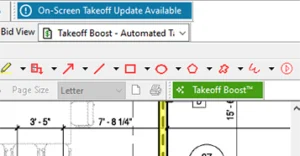With another holiday season behind us and a new year (and decade) just beginning, you may be searching for new ways to maximize your time, increase your efficiency, and generally get more done in both your professional and personal life.
Time—let’s face it—is the great equalizer. Whether you’re a roofing contractor in Iowa or a GC in Texas, we all have the same amount of it in each day, week, and year. So, the universal question becomes how do we mindfully use it to accomplish the tasks and goals we map out for ourselves?
No matter your construction trade or role, it’s important to always strive to improve your work habits and grow your business. Here are some strategies that will help you work smarter and be more productive to achieve your construction goals in 2020 and beyond.
1. Reflect on What’s Working and What’s Not
For starters, give yourself permission and time to evaluate what is and is not working both at home and at work. In other words, take stock of how you spend your time and decide whether the way that you’ve been doing things is, in fact, effective or not. Too often, we fall into the trap of complacency and allow bad habits—like using a guesstimate instead of solid bid numbers based on past projects. We become entrenched simply because we don’t pause long enough to realize this type of bidding is doing much more harm than good.
Why not resolve not to settle for the status quo? You should allow yourself to commit to new options or bidding tools for what isn’t adding value to your life. At the same time, capitalize on the methods that are proving successful so you can apply them in other areas as well.
2. Make a To-Do List and Stick to It
I’m a big fan of lists—always have been and probably always will be. A wise man I greatly admire says when you make a list, it frees your mind because the list remembers for you. You’re no longer scrambling to determine what needs to be done and when. The list will do all that—especially if you’re bidding multiple jobs. The hard part is sticking to what’s there and seeing it through to completion.
If your list includes things you’d like to do differently, consider breaking those tasks into smaller pieces. The truth is that small changes can feel better because they’re just that – small. And, that inherently makes them seem less scary and more doable. Plus, as soon as you successfully implement even a few small changes over time, your confidence will likely increase so that you’re able to see the rest of the tasks more clearly.
In addition, maintain a consistent focus on making progress rather than solely achieving the outcome. As you knock out each task on your list, celebrate your wins and those milestones that signal movement forward. And, remember not to beat yourself up if it takes slightly longer than expected to reach the final goal—like using bidding tools instead of spreadsheets. Keep marching forward and choose not to abandon the progress you’ve already made.
3. Vacate Your Comfort Zones
Ah, comfort zones. We all have them. They’re those familiar areas of life where we’ve achieved a certain level of mastery and don’t encounter too many obstacles. Sounds like a good landing spot, right? Quite the opposite. Every leadership expert I’ve ever heard says real change is possible only if you abandon your comfort zone, despite the fear such a move brings. Experts agree that moving through that fear is the only pathway to real and lasting change.
So, in 2020, pick one skill you want to learn or one goal you want to achieve that’s outside of your comfort zone—like making the transition to digital takeoff and estimating tools. At first, the whole thing might seem scary and out of reach, but don’t give into the fear. Start thinking of ways to do the thing you’ve selected. And then take the first step forward like signing up for a product demo or free trial of a digital tool.
Pretty soon, you’ll realize you’re closer than you ever thought possible to making something new happen. In addition, your confidence will soar, allowing you to tackle another pesky comfort zone you want to leave behind.
4. Reevaluate and Pivot
Finally, you should check in with yourself at a few points during the year to determine how things are progressing. Re-evaluate if the changes you’ve made are helping or hurting. For example, are you still using spreadsheets or the estimating software you purchased is still on the shelf?
Give yourself the freedom to pivot if you’re not reaching the outcomes you want. And resist the tendency to see those moments as a failure. Instead, view them as lessons that help you see the path forward even more clearly.
Are you now ready to see how much easier life can be with the industry’s leading takeoff tool? Request a demo now.



